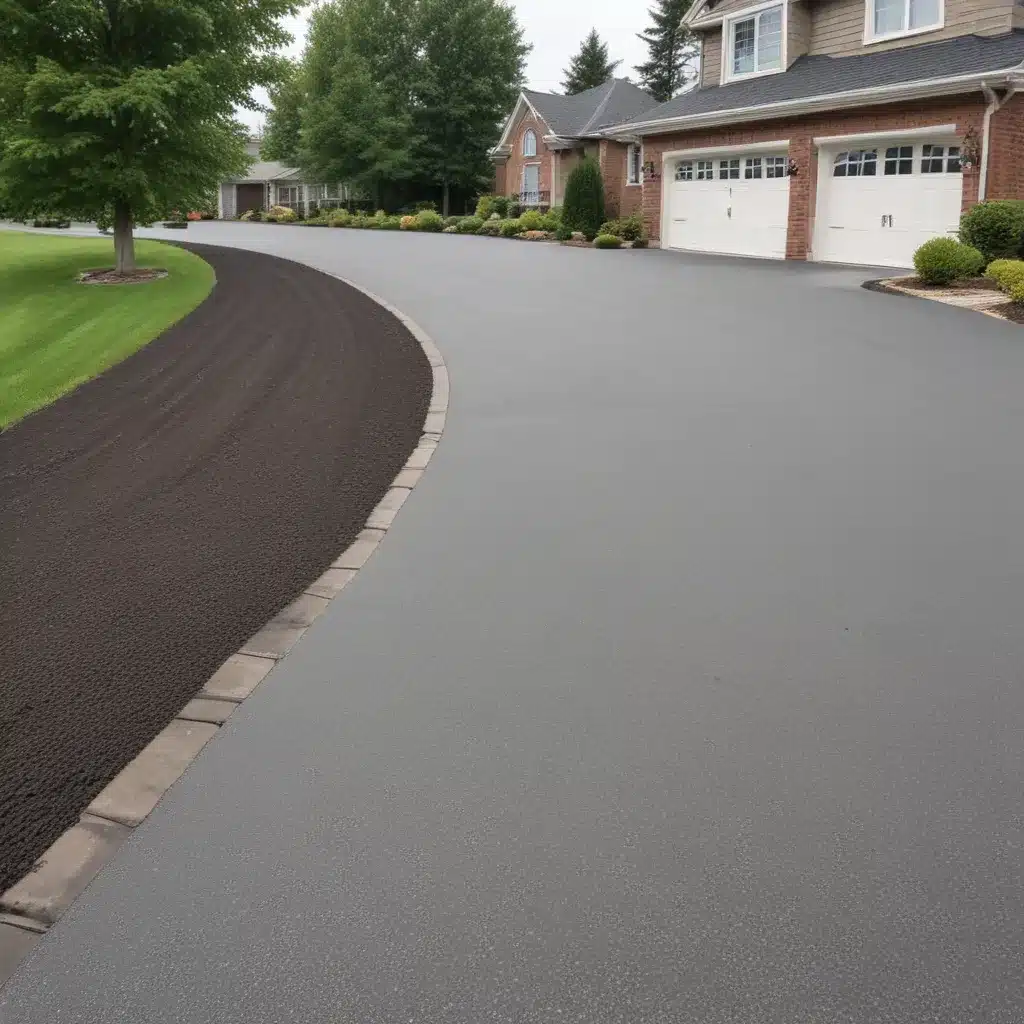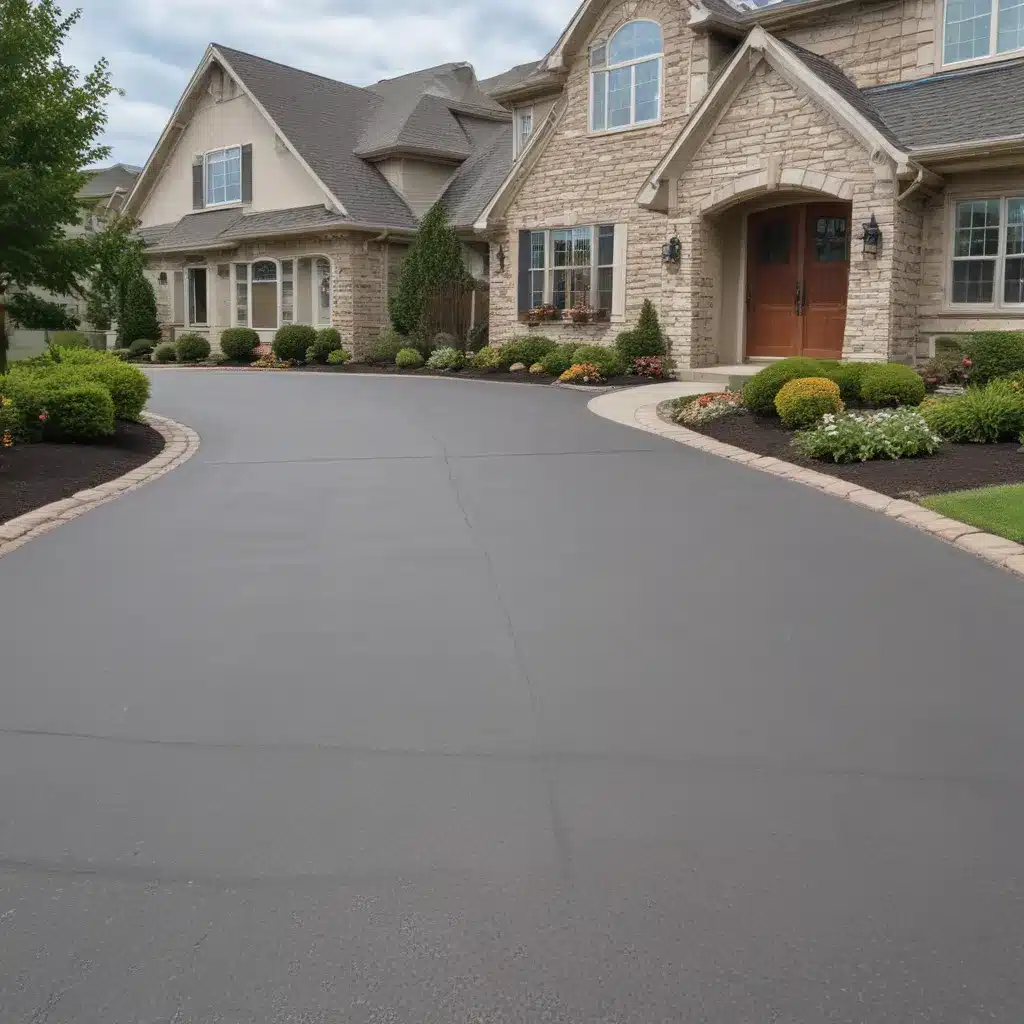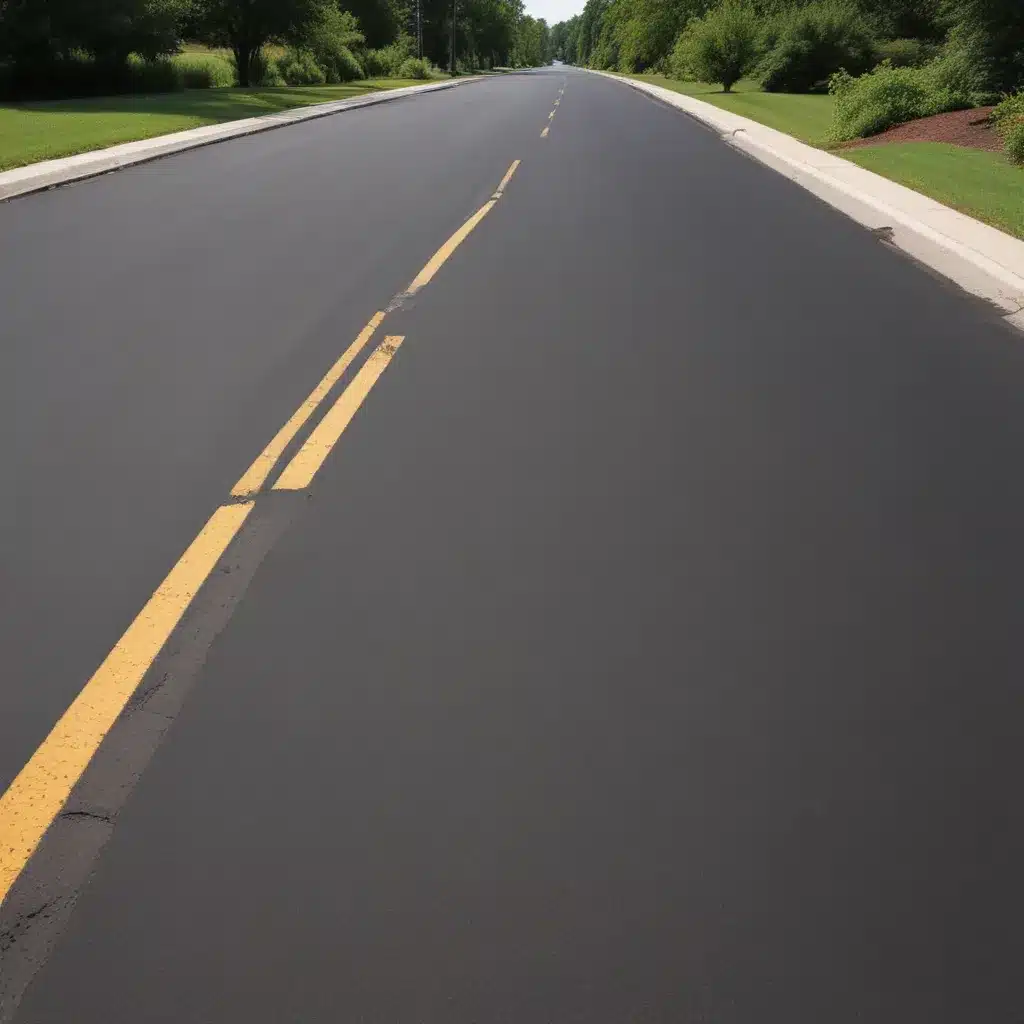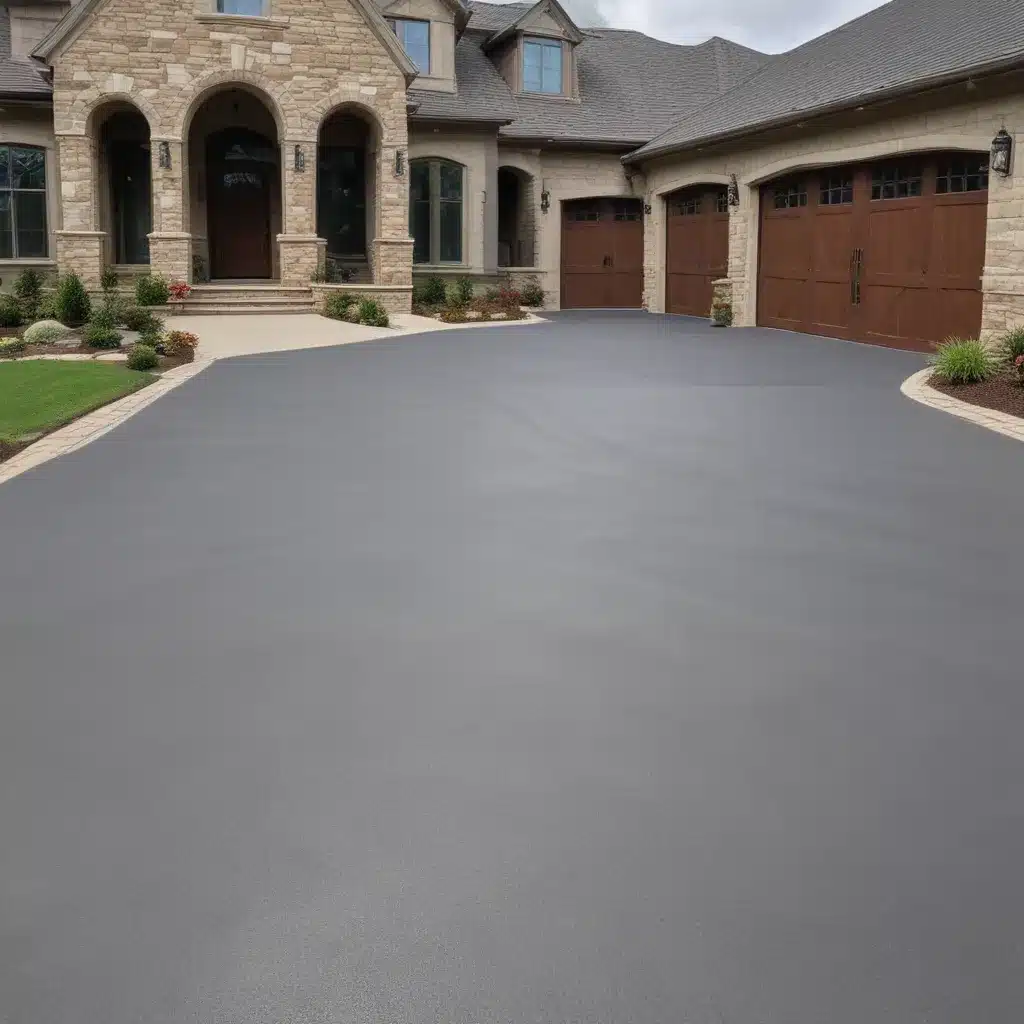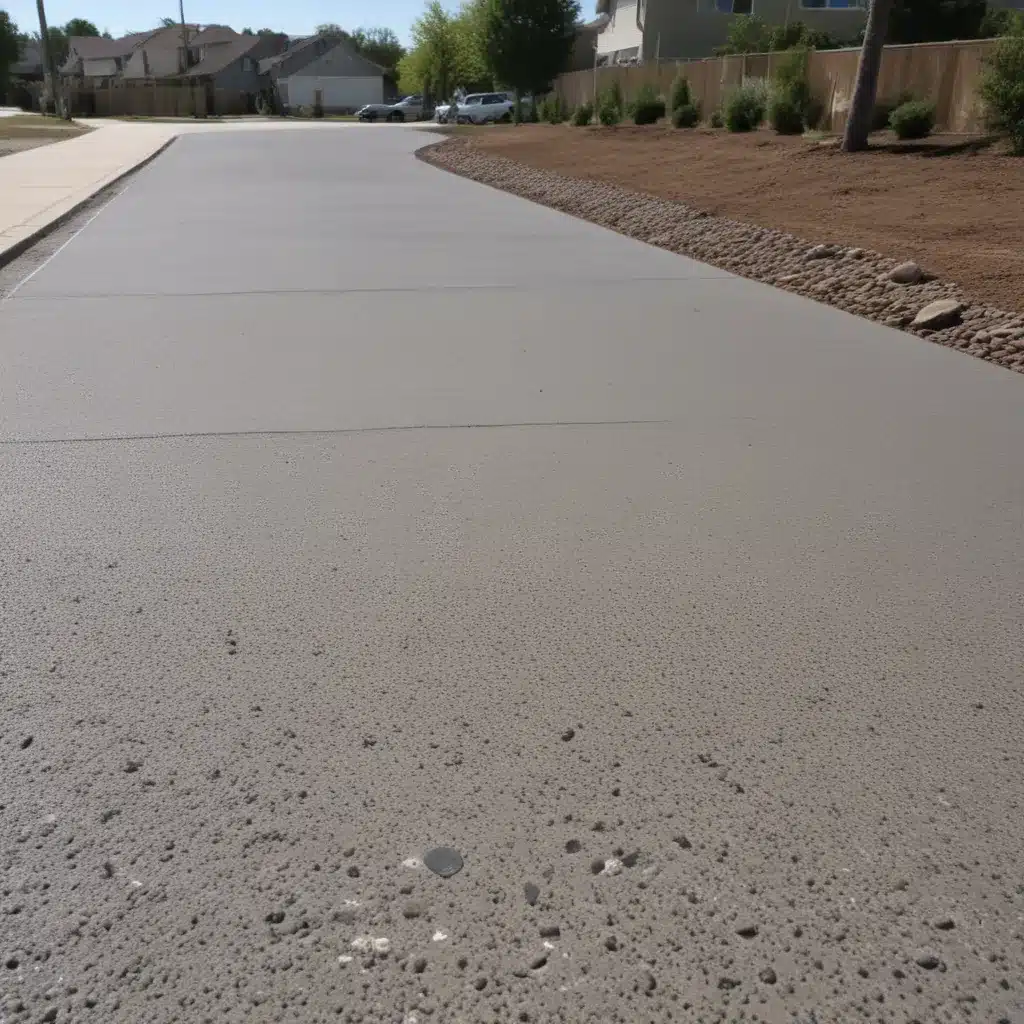Ah, the humble driveway – that unassuming stretch of paved real estate that leads us to the sanctuary of our homes. But make no mistake, my friends, the art of crafting the perfect driveway slope is no simple feat. It’s a delicate dance between functionality, aesthetics, and the whims of Mother Nature herself.
As the owner of NW Driveways, I’ve had the privilege of guiding countless homeowners through the process of transforming their driveways from mediocre to magnificent. And let me tell you, it’s a journey that’s equal parts science and sorcery.
The Importance of Driveway Slope: Mastering the Art of Drainage
Let’s start with the practical side of things, shall we? The slope of your driveway is arguably the most crucial element in ensuring proper drainage. You see, a well-designed slope allows water to effortlessly flow away from your home, preventing unsightly puddles and potential foundation issues.
Imagine a driveway that’s as flat as a pancake – the water has nowhere to go but straight into your garage, or even worse, seeping into your home’s basement. Not a pretty picture, am I right? On the other hand, a driveway that’s too steep can be a treacherous affair, with cars struggling to gain traction and safety becoming a major concern.
It’s a delicate balancing act, this driveway slope business. Too little and you’ve got a recipe for disaster; too much and you might as well be driving up a mountain. But fear not, my friends, for I’ve got the secret sauce to help you achieve the perfect middle ground.
The Sweet Spot: Determining the Optimal Driveway Slope
As a general rule of thumb, the ideal driveway slope should fall somewhere between 1% and 3%. Anything less than 1% and you’re practically begging for a drainage disaster, while anything greater than 3% can make your driveway feel more like a roller coaster than a smooth ride.
Of course, the specific slope required for your driveway will depend on a variety of factors, including the size and shape of your property, the local climate, and the overall terrain. That’s where the expertise of a seasoned driveway contractor, like myself, comes into play.
Picture this: you’ve got a sprawling estate with a long, winding driveway. The last thing you want is for that driveway to resemble a veritable river during a heavy downpour, right? That’s where a slightly steeper slope might be the answer, ensuring that the water has a clear path to the nearest drainage system.
On the other hand, let’s say you’ve got a cozy little bungalow with a short, straight driveway. In this case, a more gradual slope might be the way to go, providing a smooth, seamless transition from the street to your garage.
Designing for Drainage: Factors to Consider
Now, I know what you’re thinking – “But wait, how do I know which slope is right for my driveway?” Ah, my friends, that’s where the real fun begins.
When it comes to determining the optimal driveway slope, there are several key factors to consider:
-
Local Climate: The amount of rainfall your area typically receives can have a significant impact on the slope required. In regions with heavy precipitation, a steeper slope might be necessary to ensure efficient water runoff.
-
Driveway Length and Gradient: The length and overall gradient of your driveway will play a crucial role in determining the ideal slope. Longer driveways may require a slightly steeper slope to maintain proper drainage, while shorter ones can often get away with a gentler incline.
-
Soil Composition: The type of soil beneath your driveway can also influence the required slope. Clay-heavy soils, for instance, may need a more pronounced slope to prevent water from pooling, while sandy soils might be better suited to a more gradual incline.
-
Existing Terrain: The natural lay of the land surrounding your driveway can’t be ignored either. If your property is situated on a hillside or slope, you’ll need to factor that into your driveway design to ensure a seamless integration.
-
Accessibility and Safety: Let’s not forget the human element, shall we? The slope of your driveway should also be designed with accessibility and safety in mind. After all, you don’t want your elderly relatives or young children struggling to navigate a treacherous incline, do you?
Striking the Perfect Balance: Harmonizing Drainage and Aesthetics
But wait, there’s more to the perfect driveway slope than just practical considerations. Oh no, my friends, we’ve also got to factor in the all-important element of aesthetics.
You see, a well-designed driveway isn’t just about keeping the water at bay; it’s also about creating a visual masterpiece that complements the overall architecture and landscape of your property. And trust me, finding that sweet spot between form and function can be a real challenge.
Imagine a driveway that’s too steep – it might be incredibly efficient at whisking away water, but it could also make your home look like it’s sitting atop a mini-mountain, completely out of sync with its surroundings. On the flip side, a driveway that’s too flat might look perfectly level and serene, but it could also feel a bit like a barren runway, devoid of any visual interest.
It’s all about striking the right balance, my friends. A driveway slope that’s just right, gently guiding the water away while seamlessly blending with the natural contours of your property. It’s a delicate dance, to be sure, but when you nail it, oh, the results are simply breathtaking.
Bringing it All Together: Real-World Examples of Driveway Slope Perfection
Now, I know what you’re thinking – “Alright, Driveway Guru, enough with the theory, let’s see some real-world examples!” Well, my friends, I’m more than happy to oblige.
Let me tell you about the Smiths, a lovely couple who came to me a few years back with a driveway dilemma. Their previous driveway was a disaster, with water pooling up and threatening to seep into their garage. It was a nightmare, let me tell you.
But never fear, the Driveway Whisperer was here! After carefully analyzing the lay of the land and considering the local climate, we settled on a driveway slope of 2.5%. This gentle incline was just enough to ensure efficient drainage, while still maintaining a visually appealing and seamless integration with the rest of their property.
The result? Pure driveway perfection. No more unsightly puddles, no more worries about foundation damage. Just a smooth, gently sloping driveway that’s the envy of the entire neighborhood.
And then there’s the Wilsons, a family with a long, winding driveway that had been giving them fits for years. With a steep, hilly terrain and a propensity for heavy downpours, their previous driveway was more like a waterslide than a proper point of entry.
But fear not, I was on the case. After a thorough assessment, we decided on a driveway slope of 3%, just enough to ensure efficient water runoff without turning their driveway into a white-knuckle thrill ride. The result? A driveway that not only looks stunning but also performs like a champ, keeping their home high and dry even during the most torrential of storms.
So, my friends, the moral of the story is this: when it comes to achieving the perfect driveway slope, it’s all about finding that delicate balance between form and function. With a little bit of know-how and a whole lot of trial and error, you too can transform your humble driveway into a work of art that’s the envy of the entire neighborhood.
And if you ever find yourself in need of a driveway champion, well, you know where to find me. NW Driveways is always here, ready to guide you on your journey to driveway perfection.

